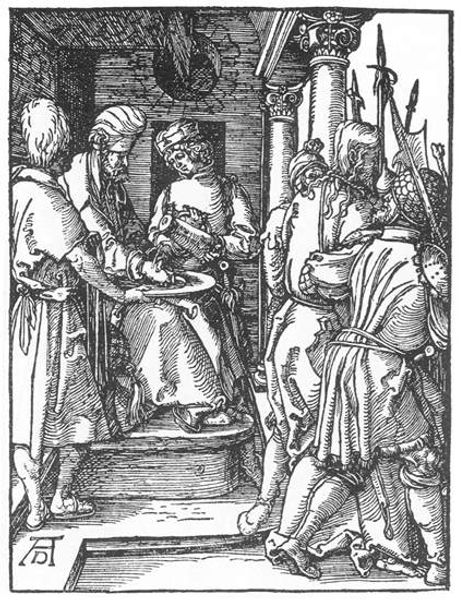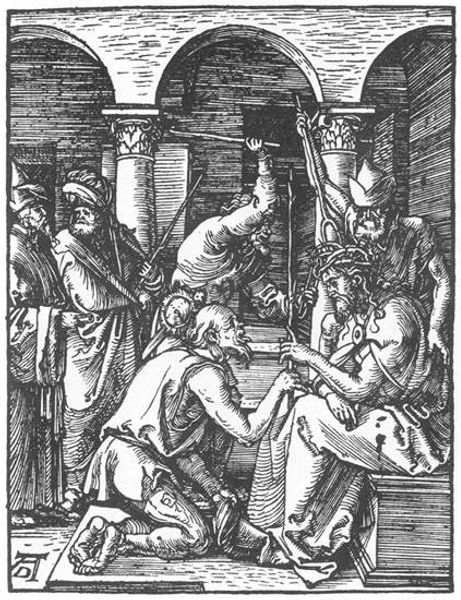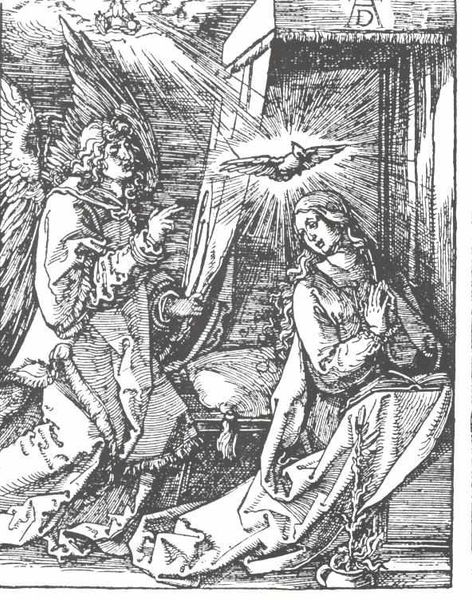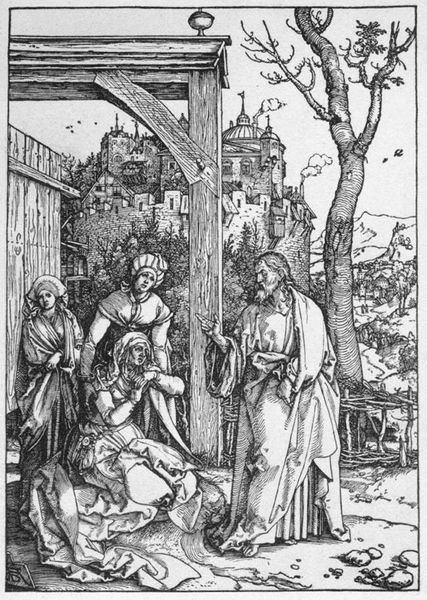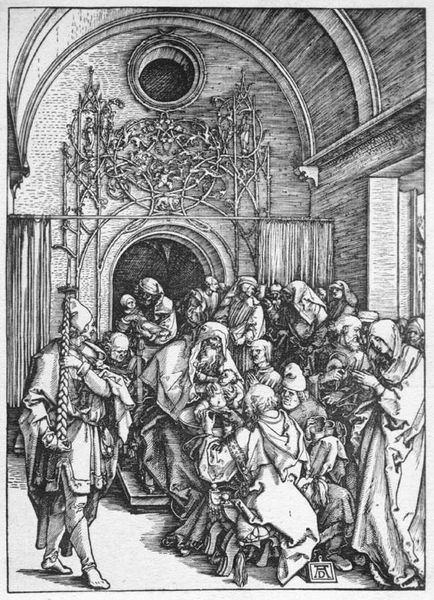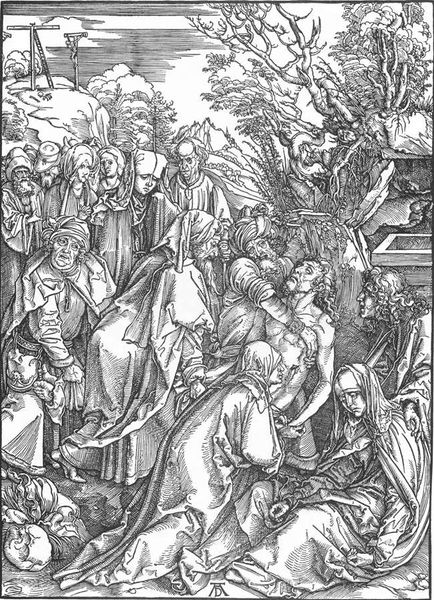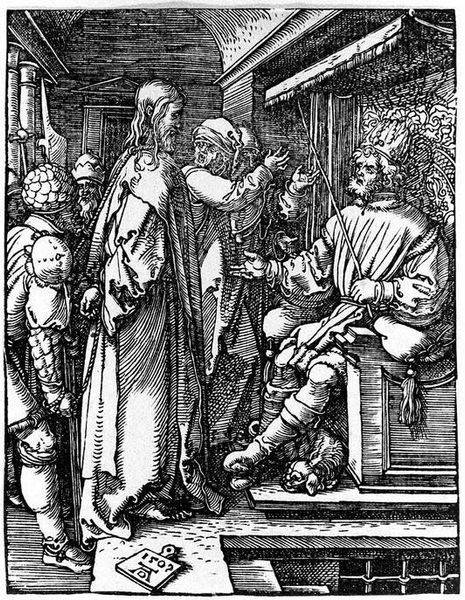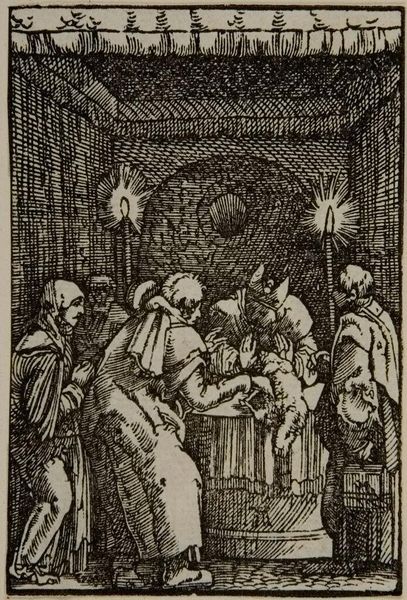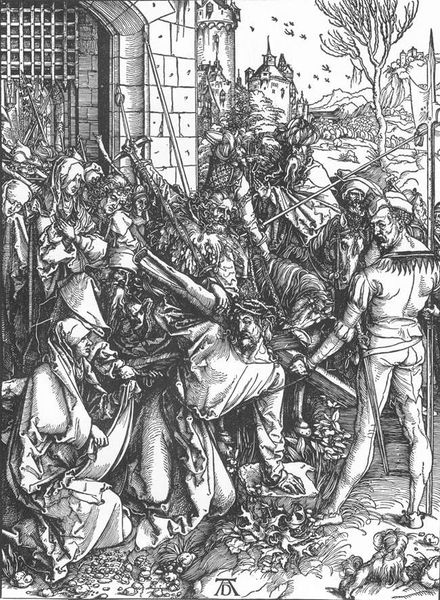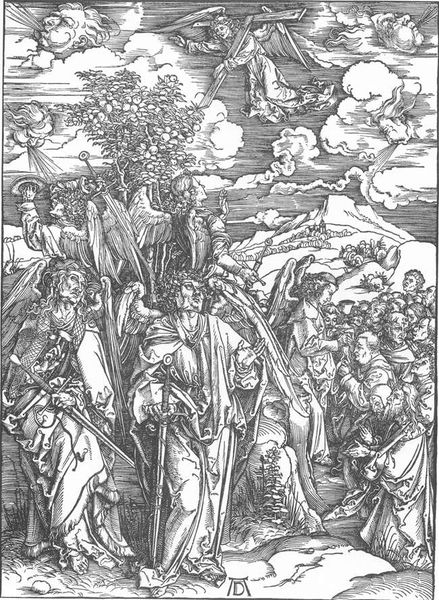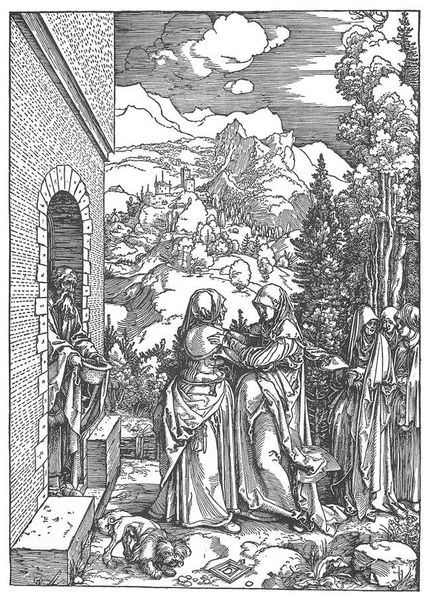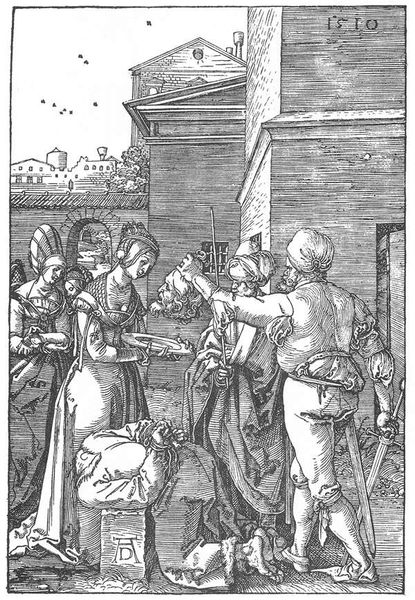
drawing, woodcut, engraving
#
portrait
#
drawing
#
figuration
#
woodcut
#
christianity
#
history-painting
#
northern-renaissance
#
engraving
#
christ
Copyright: Public domain
Curator: Let’s turn our attention to Albrecht Durer’s woodcut, "The Adoration of the Magi," created in 1503. Editor: The first impression I get is one of incredibly intricate detail despite the monochrome medium. Look at how Durer plays with texture! The sheer volume of cross-hatching gives a dense and rich feel. Curator: Absolutely. The textures do draw one in. The Adoration of the Magi is a scene laden with symbolic meaning, and it comes at a particularly transitional time. The visitation of the Magi is representative of non-Jewish peoples being drawn to Christ; these Gentiles recognize the Christ child's special destiny. Editor: Note the architecture; it feels like a ruin, almost deliberately collapsing. Yet above it hangs a symbol of promise, the star, impeccably rendered. Is this about decay being integral to eventual renewal? The high-contrast lines also highlight these juxtapositions, underscoring an interesting thematic opposition. Curator: Perhaps it mirrors the decline of the old order before the arrival of Christ. We can trace the roots of such interpretations far back. Think of how Christian texts were frequently built upon pre-existing mythologies, reshaping symbolic structures. Editor: The way Durer renders the folds of the fabric seems more than descriptive; it’s as if each line is not only outlining shape but also carrying a story. There is almost too much information packed into each little slice of the overall composition. Curator: Northern Renaissance artists, and Durer certainly embodies this, used such elements of ornamentation to convey theological ideas as readily as classical narratives. The accumulation of realistic details serves to highlight and authenticate a scene in ways we still register on some level. We see an echo of these traditions still with us today. Editor: Looking again, I find Durer’s composition almost feels modern. The lines have such precision and clarity, making it strikingly immediate and effective, despite its complex symbolism. Curator: Indeed. Thinking about the interplay between tradition and innovation is often crucial for understanding artworks like this one. Thank you for your insight. Editor: My pleasure, It is remarkable how a close formal examination enhances the understanding of even the best-known iconic scenes.
Comments
No comments
Be the first to comment and join the conversation on the ultimate creative platform.
